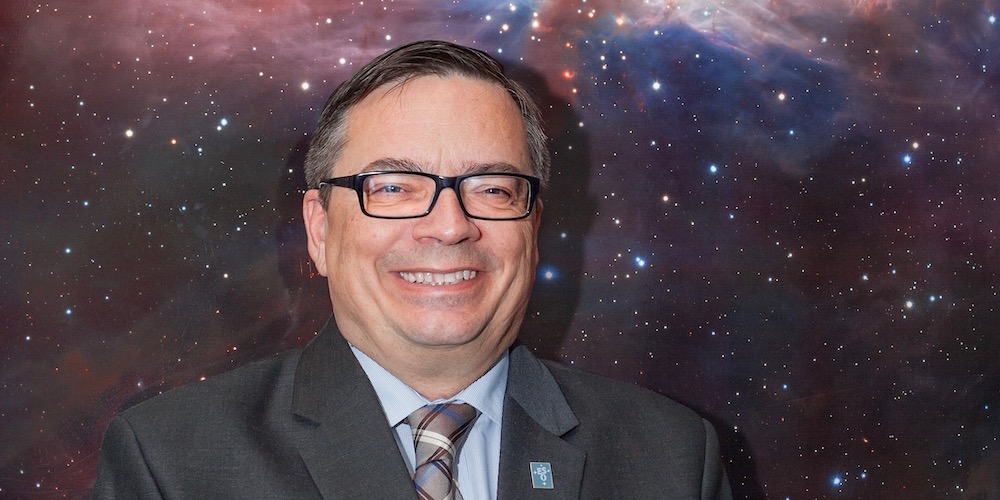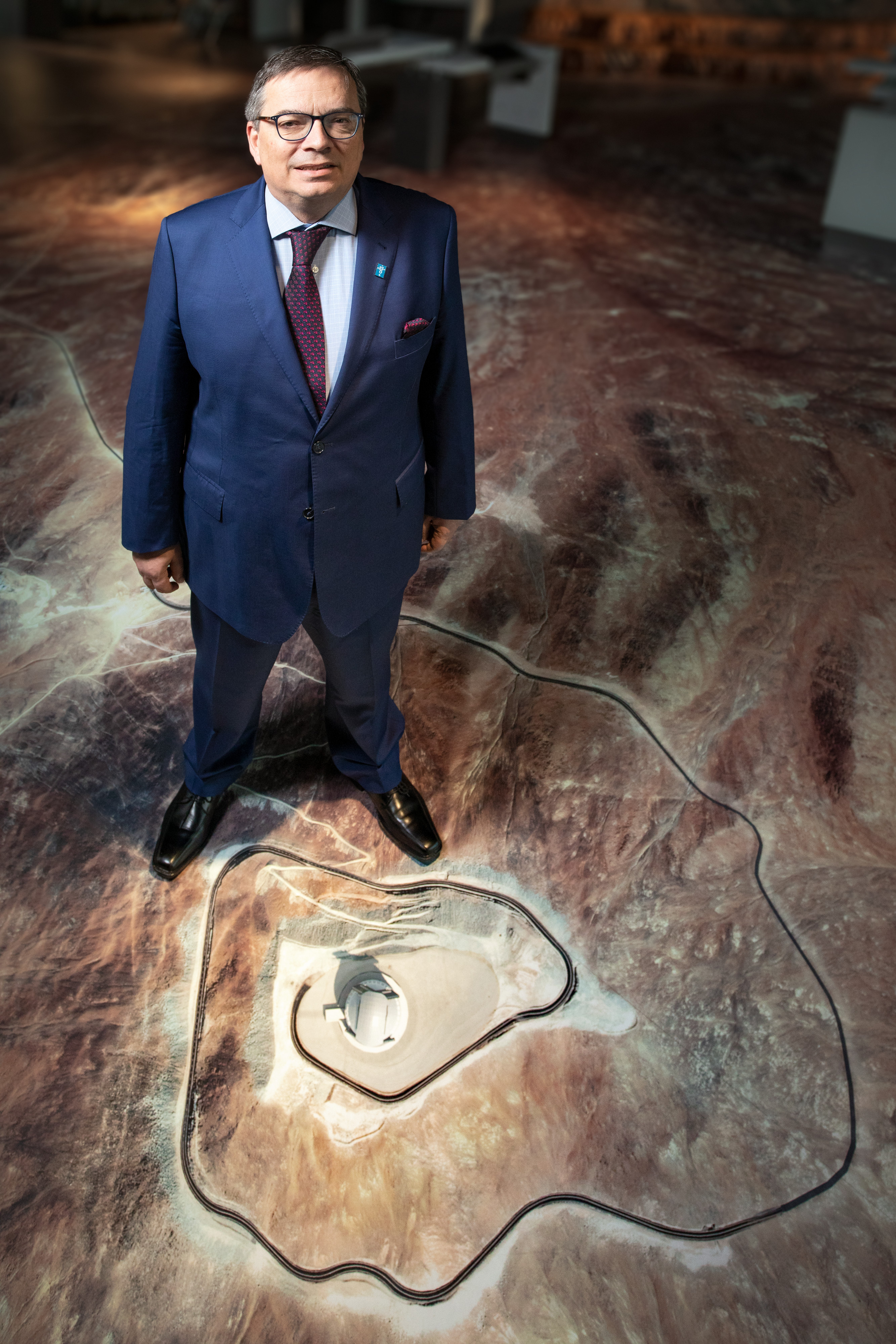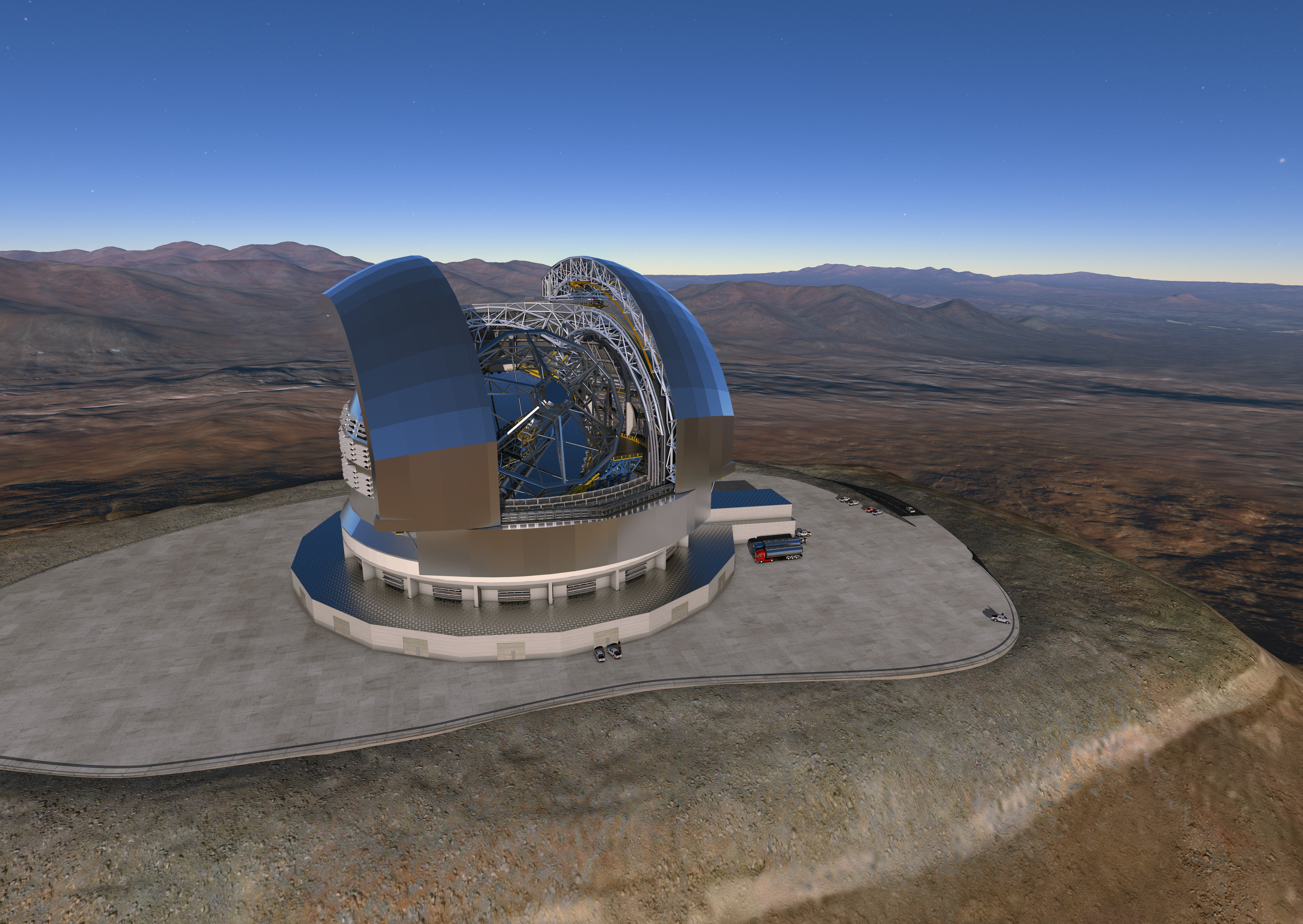“This is a gigantic project even for ESO”

Xavier Barcons is Director General of the European Southern Observatory ESO. Last week he travelled to Switzerland for the ESO Council Meeting that took place in Bern. ESO is currently building the Extremely Large Telescope ELT. With a mirror diameter of 39 meters the ELT will be the world’s largest optical/near-infrared telescope.

Xavier Barcons, Director General of ESO, standing on a map of ESO’s Chilean site of the future Extremely Large Telescope (ELT). (Photo ESO/M. Zamani)
NCCR PlanetS: What about the construction of the ELT?
Xavier Barcons: It is making a lot of progress. In Europe, we are advancing very seriously on many of the industrial contracts that we have. The optomechanics which is one of the critical parts of the telescope is doing really very well.
In Chile, last year the excavations were completed in the top of Armazones, the mountain where the telescope will sit on. Now the site is waiting for the contractor to step in with the dumpers for the earthquake protection and the foundations. At the same time, we are also on a very advanced stage of the design of the dome and the mechanical structure of the telescope.
We are also making progress with the instruments that will be there when the telescope starts operation. We had what we call ‘the preliminary design review’ for most of them already. So, we know what the institutes in the member states are going to build, and that we will be able to do the science that we want to do with the ELT.
So, you have no sleepless nights?
I normally get so tired by night that I always sleep… Of course, there are always worries and concerns, this is normal. This is a gigantic project even for ESO. It is quite a bit of a stretch over our capacities, and also the capacities of the community and of industry to build this wonderful machine. There are plenty of challenges everywhere, but we are doing well.
When will the ELT be operational?
First light is for the end of 2025. First light means that we have been able to get the telescope in shape, that we point to the sky and that we get an image of a star, but at this point we don’t already start observing the sky with scientific purposes. Then there is a phase whereby we need to mount the instruments on the platforms of the telescope and commission them. This may take another one or two years. So, operations in the sense that we deliver scientific data as requested by the community will start in 2026 at best.
What results do you expect from this gigantic machine?
As all the big projects it has been designed to achieve some specific scientific goals. I can list a few of them like finding Earth analogues orbiting stars very similar to the sun, resolving the immediate vicinity of black holes, finding the first galaxies that created stars along the history of the universe, resolving individual stars in other galaxies and many other very exciting science targets. We can even measure the acceleration of the universe in real time with the ELT when it is fully equipped.
It is all very exciting. But I have to alert you of one thing that happened in all the big facilities in astronomy: I am sure that most of the discoveries the ELT will do we cannot predict today. The Hubble Space Telescope is a very good example. It was designed with a very clear objective in mind which was to measure the Hubble constant. This is the rate at which the universe expands. And indeed, Hubble did this, but of the ten most important discoveries that Hubble did this is barely one of them. All the others were totally unforeseen. The ELT is not an experiment designed to crack a specific question like finding the Higgs boson or what is the dark matter particle or anything like this. It is really a facility instrument and therefore has a very broad set of objectives many of which we cannot even anticipate today.

The artist’s rendering shows how the ELT will look on the Cerro Armazones mountain in the Chilean desert when it is complete. (Illustration ESO/L. Calçada/ACe Consortium)
As a specialist in X-ray astronomy you studied active galaxies and high energy phenomena. Now planets are among the hot topics in astronomy. Do you observe a shift in themes?
The vision of the main scientific topics that we are going to have over the next decades contains a number of elements which were not there 30 years ago. Exo-planets are a fascinating topic. When I was a lecturer at the university in the early 90s, there was no exo-planet known. I couldn’t possible teach anything about exoplanets in my lectures, nor was the accelerated expansion of the universe known at that time. I remember explaining to my students the universe expands, but it expands in a decelerated way, because it contains matter and that provokes that the velocity decreases. And it was wrong! Many things have changed so dramatically over the last decades. That’s all fine, it’s excitement all over the place.
As Director General of ESO you are not able to do much research any more. Do you miss it?
I am enjoying enormously the work that I am doing now. It is very challenging but very attractive. I did research for most of my life, and I am missing it, but it is also full of rewards when you are leading an organization that makes such gigantic achievements. That is something I am very happy with.
What significance does Switzerland have for ESO?
It is very important. Switzerland has been a member of ESO for 37 years, a fantastic engagement. Being a member of ESO means supporting the organization in building these big facilities that we have in Paranal, in ALMA and now with ELT, but also making crucial contributions to our instrumentation program. Switzerland had really important contributions, like HARPS for example in La Silla, and now ESPRESSO in Paranal. Those are very important aspects where the commitment from the member states is critical. Also, the science return that has come out of this engagement is truly fascinating. There are lots of discoveries and advancements in astronomy that come with a Swiss stamp. And now I am also in a position where I have a Swiss boss, the ESO Council President Willy Benz who is also an old friend and colleague and this gives me additional pleasure to work at ESO.
Xavier Barcons has been ESO Director General since 1 September 2017. He was born in Spain in 1959, studied physics and made his academic career in Spain and UK. Since 2002 he has been CSIC Research Professor at the Physics Institute of Cantabria in Santander, Spain. He is married and has two children.
https://www.eso.org/public/about-eso/dg-office/
Categories: External Newsletter, News, Uncategorized

